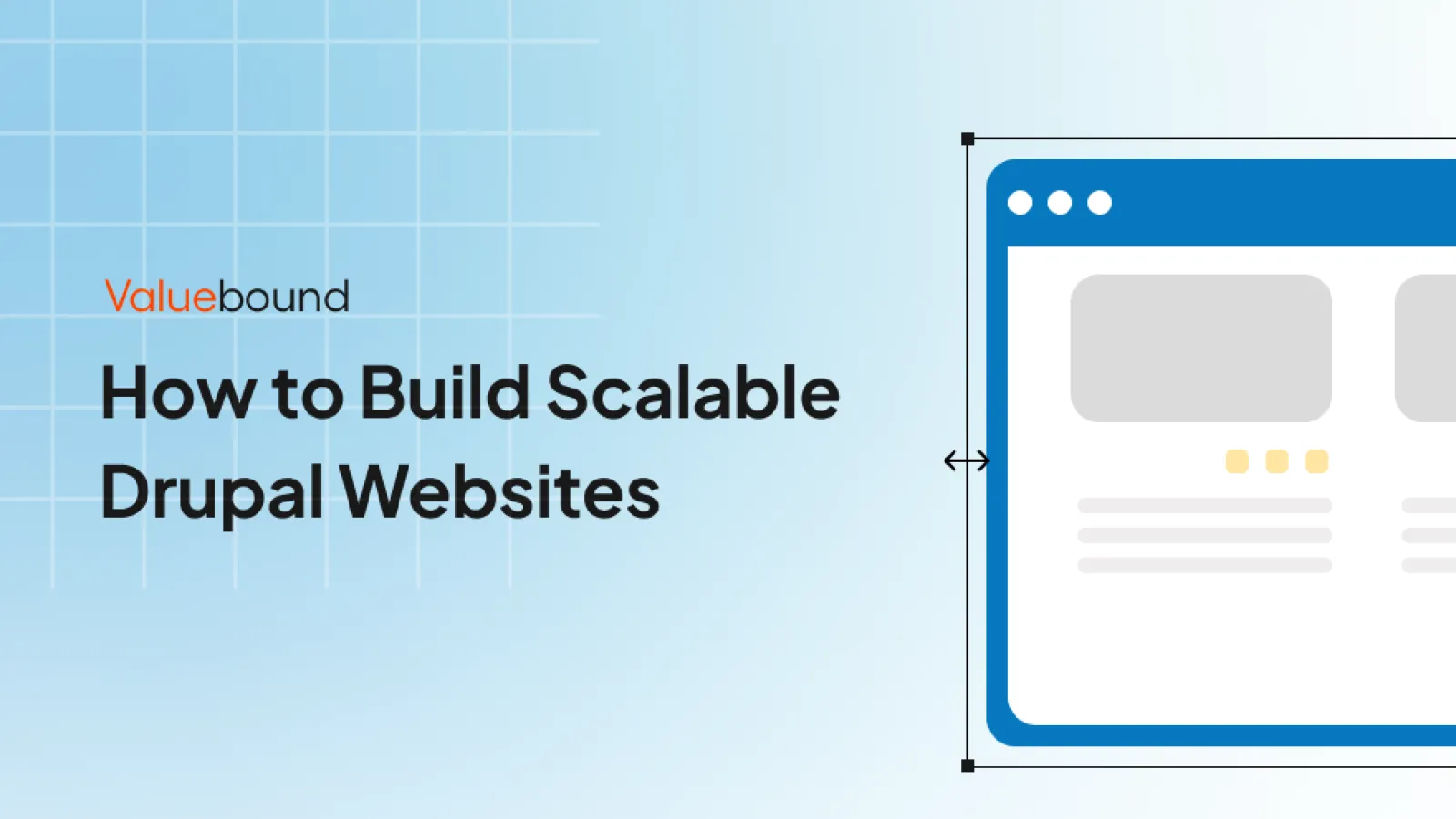Scalability is not just a buzzword—it's a necessity for organizations managing complex digital ecosystems. Whether you're a financial institution overseeing multiple regional websites or a university juggling department-specific portals, a scalable website can define your success in today’s fast-paced digital landscape. For enterprises leveraging Drupal, building scalable websites requires thoughtful planning, robust architecture, and precise execution.
This guide explores key strategies and best practices to ensure your Drupal website evolves with your business, delivering consistent performance and ROI.
Understanding Scalability in Drupal
Scalability refers to a website's ability to handle increasing traffic, data, and functionality without compromising performance. For Drupal, this involves leveraging its modular design and vast ecosystem of contributed modules to craft a site that grows in tandem with your organizational needs. However, achieving true scalability is about more than just picking the right tools; it’s about implementing a strategic foundation.
Key Challenges:
- Managing multi-brand or multi-location operations.
- Addressing fragmented governance.
- Balancing high maintenance costs with consistent performance.
- Ensuring robust security and compliance.
Strategies for Building Scalable Drupal Websites
1. Adopt a Modular Architecture
Drupal’s architecture is inherently modular, allowing you to build features as needed. Prioritize custom Drupal development over one-size-fits-all solutions. For instance, using the Drupal migrate module for phased migrations ensures flexibility as your needs evolve.
2. Invest in a Comprehensive Site Audit
Before scaling, conduct a site audit Drupal to assess your current setup. A site audit identifies bottlenecks, outdated modules, and redundant processes. Enterprises with complex ecosystems often uncover hidden inefficiencies that, when resolved, streamline performance.
3. Implement a Multi-Site Strategy
For organizations managing multiple websites, Drupal’s multi-site capabilities enable centralized governance while maintaining individual branding. This approach reduces duplication of efforts and simplifies maintenance.
4. Focus on Performance Optimization
Scaling a website without addressing performance is a recipe for disaster. Key optimization tactics include:
- Leveraging caching tools like Varnish and Memcached.
- Using content delivery networks (CDNs) to reduce server load.
- Optimizing database queries to speed up load times.
5. Plan for Migration Early
Migrating from Drupal or upgrading to the latest version requires careful planning. Engage Drupal migration services early to avoid pitfalls. Whether you’re transitioning from Drupal 8 to Drupal 10 or moving from another CMS, phased migration ensures minimal disruption.
6. Enhance Security and Compliance
For CIOs and CTOs, security is a non-negotiable priority. Drupal offers robust security modules to safeguard data, but scalability demands proactive measures:
- Regular Drupal site audits to detect vulnerabilities.
- Compliance with industry standards like GDPR, HIPAA, or PCI DSS.
- Ensuring secure API integrations for third-party tools.
Overcoming Maintenance Challenges
As your site grows, so do maintenance demands. Enterprises often grapple with rising costs and inefficiencies. However, these challenges can be mitigated with the right strategies:
Outsourced Maintenance
Many organizations turn to a Drupal development company for Drupal support and maintenance services. This approach ensures access to specialized expertise without the overhead of a large in-house IT team.
Automate Updates
Automated tools can streamline updates for core, module, and security patches, reducing manual intervention and downtime.
Optimize Resource Allocation
Invest in solutions that reduce infrastructure inefficiencies. For example, optimizing server configurations can improve efficiency by up to 20% while reducing costs.
Real-World Example: Scaling for Multi-Brand Retailers
Consider a multi-brand retailer managing region-specific websites. Initial challenges included fragmented governance, slow deployment times, and security vulnerabilities. By implementing a centralized multi-site architecture with shared resources, the retailer reduced maintenance costs by 40% and improved infrastructure efficiency by 20%.
Using custom Drupal module development, they introduced localized features for each region without sacrificing performance. A phased migration strategy also ensured business continuity during the transition.
Metrics-Driven Success
When scaling, tracking the right metrics ensures you’re on the path to success. Key performance indicators (KPIs) include:
- Page Load Speed: Aim for under 2 seconds to enhance user experience.
- Uptime: Maintain 99.99% uptime to avoid disruptions.
- Conversion Rates: Monitor how site performance impacts sales or lead generation.
- Cost Savings: Calculate reductions in maintenance and operational costs.
The Valuebound Advantage
While this guide avoids promotional tones, it's worth noting that enterprises often struggle with generic providers that lack scalability-focused solutions. By choosing partners with deep Drupal expertise, you gain access to:
- Proprietary frameworks for time and cost efficiency.
- Custom solutions aligned with your digital transformation goals.
- Proven success in scaling complex ecosystems.
Final Thoughts
Building a scalable Drupal website is not a one-time project but an ongoing process. For CIOs and CTOs, the focus should remain on balancing cost-efficiency, performance, and security. With a strategic approach to modular development, site audits, and performance optimization, Drupal can serve as a robust platform for scaling digital operations.
The journey may be complex, but the ROI—from reduced costs to enhanced user experience—makes it a worthwhile investment. Start today by assessing your current Drupal setup and planning for scalable growth.
FAQs
1. What is the best way to start scaling a Drupal website?
Conduct a comprehensive site audit to identify bottlenecks and inefficiencies.
2. How does a multi-site strategy support scalability?
It centralizes governance while allowing individual websites to maintain unique branding and features.
3. Why are site audits essential for scalability?
They uncover performance issues, outdated modules, and security vulnerabilities that can hinder growth.
4. What role does security play in scaling Drupal websites?
Security ensures compliance, protects data, and safeguards against vulnerabilities that could disrupt operations.
5. How do I ensure cost efficiency during scaling?
Automate updates, optimize server configurations, and consider outsourced Drupal maintenance and support.





